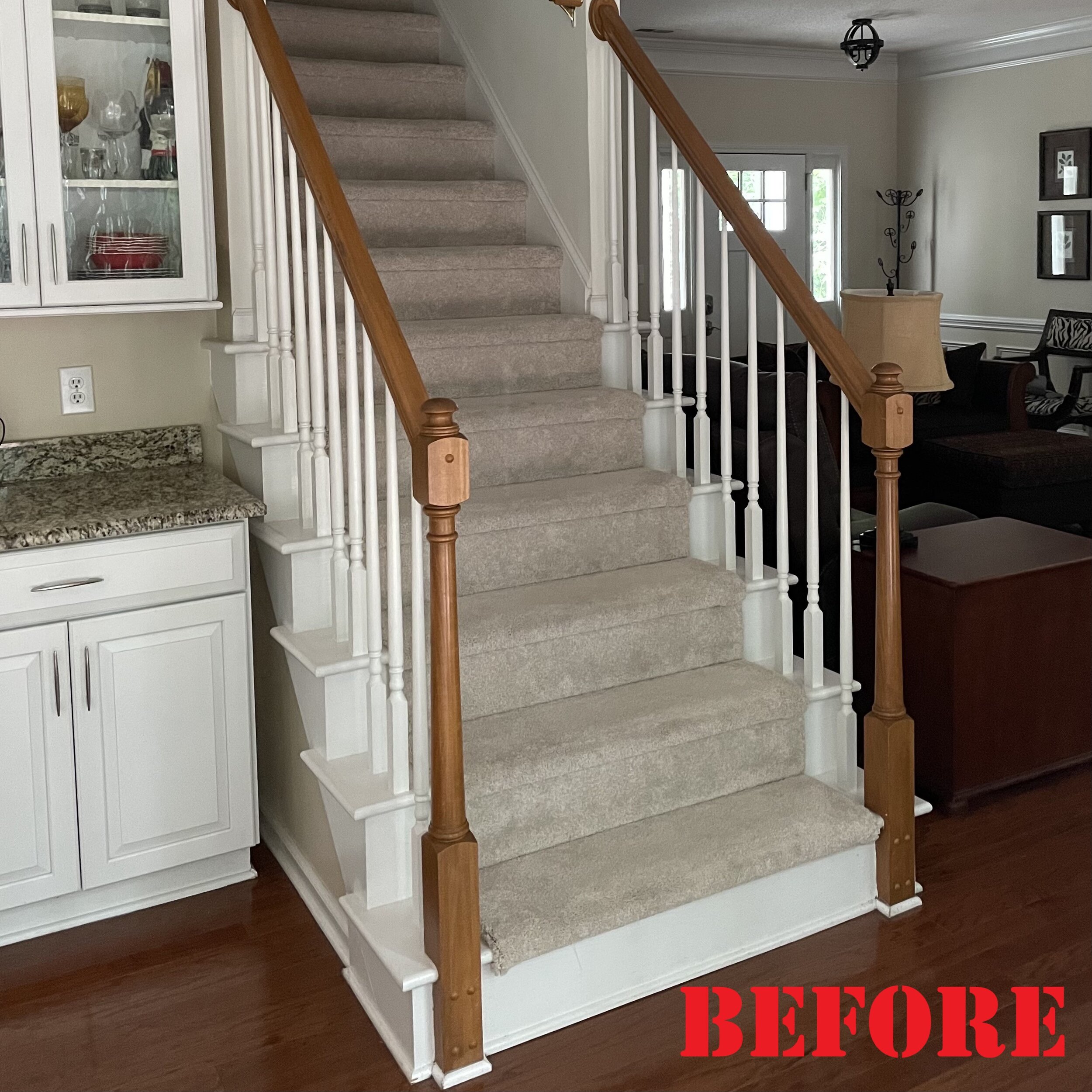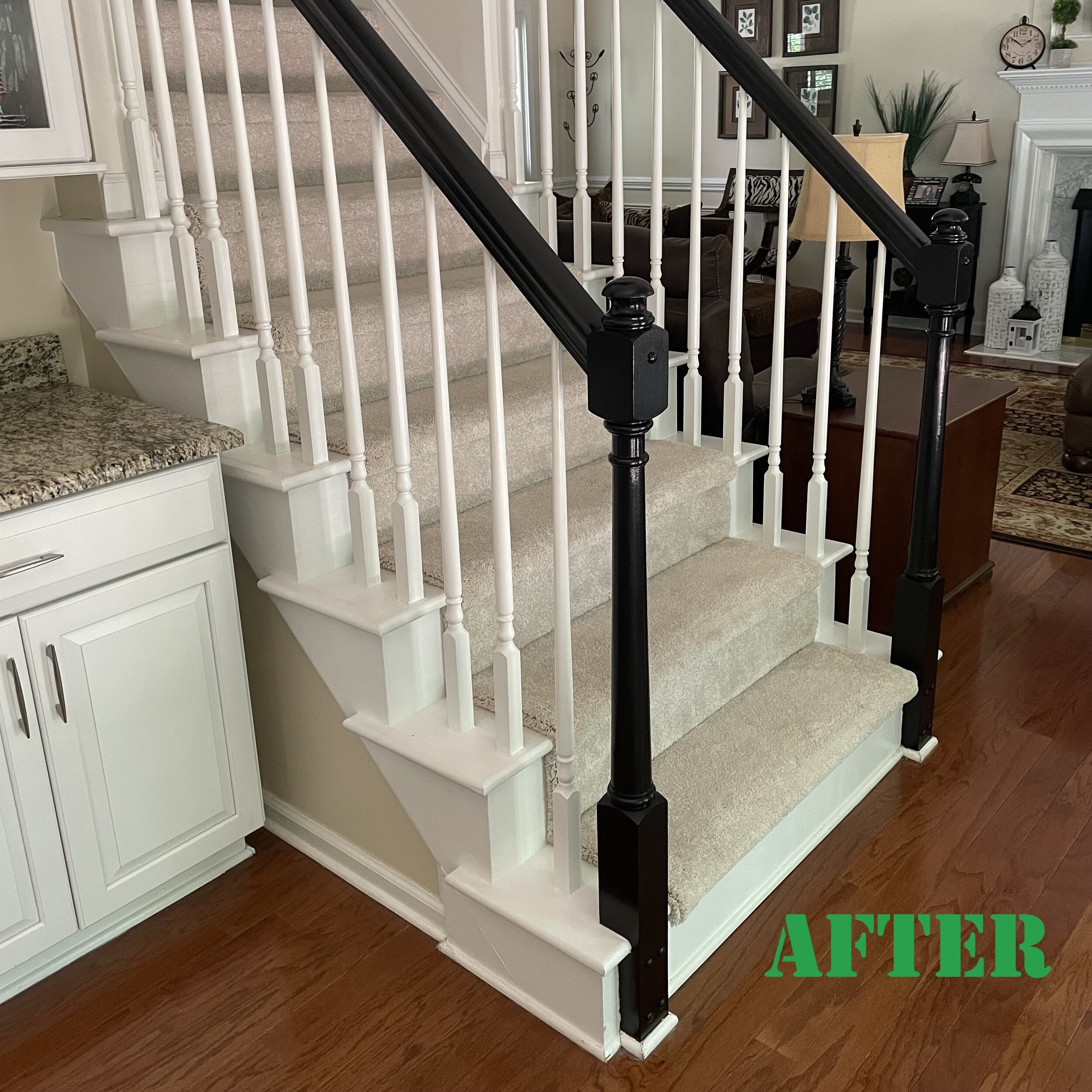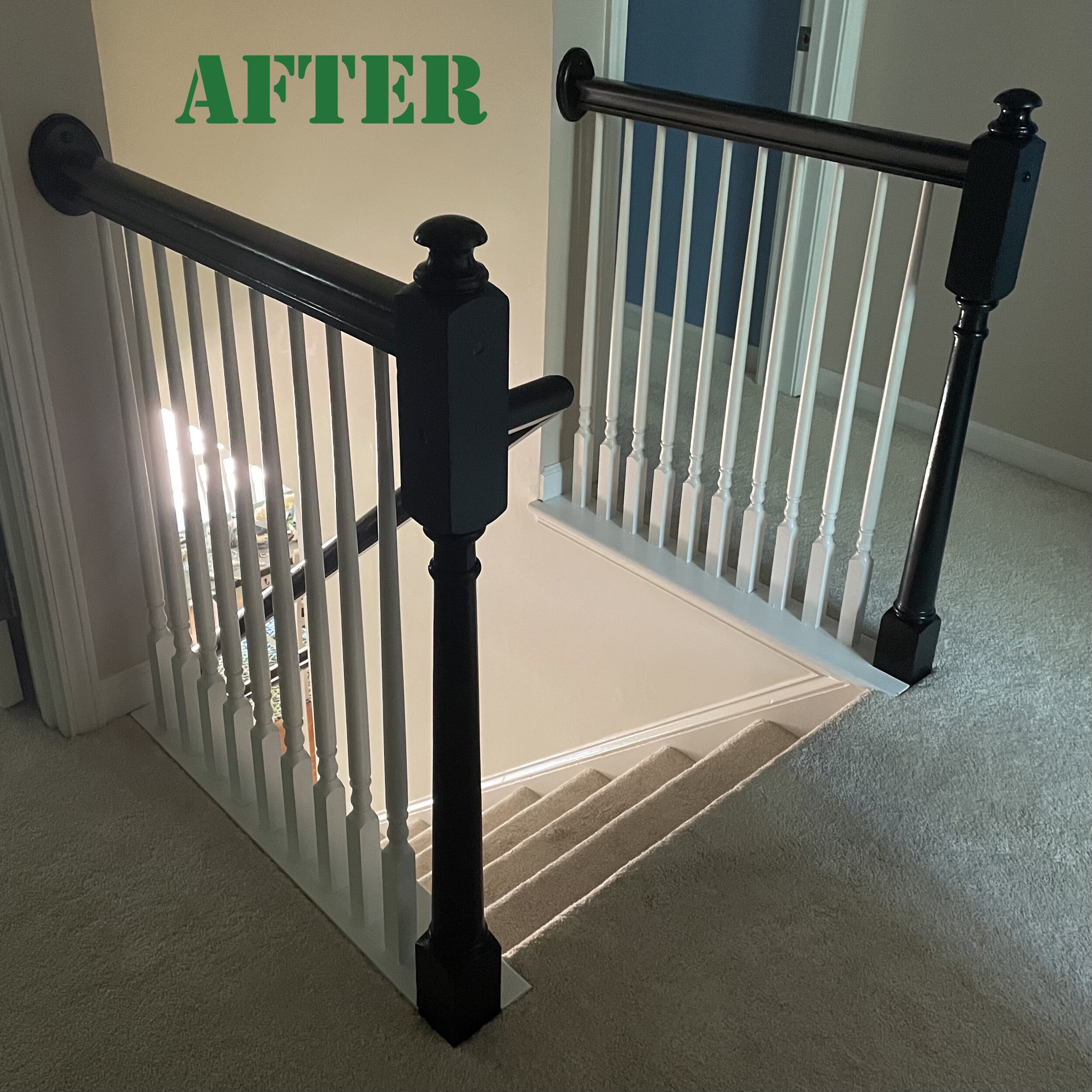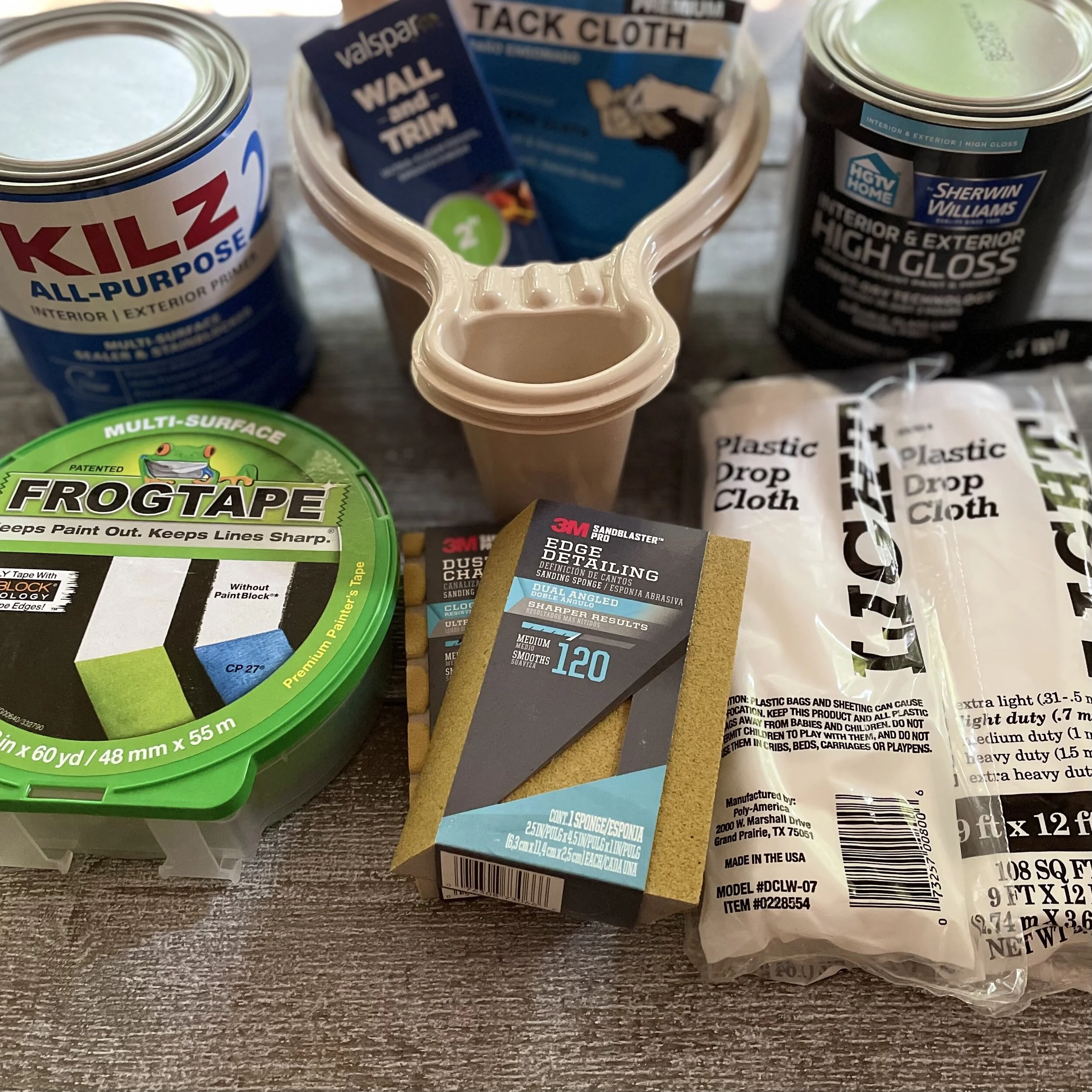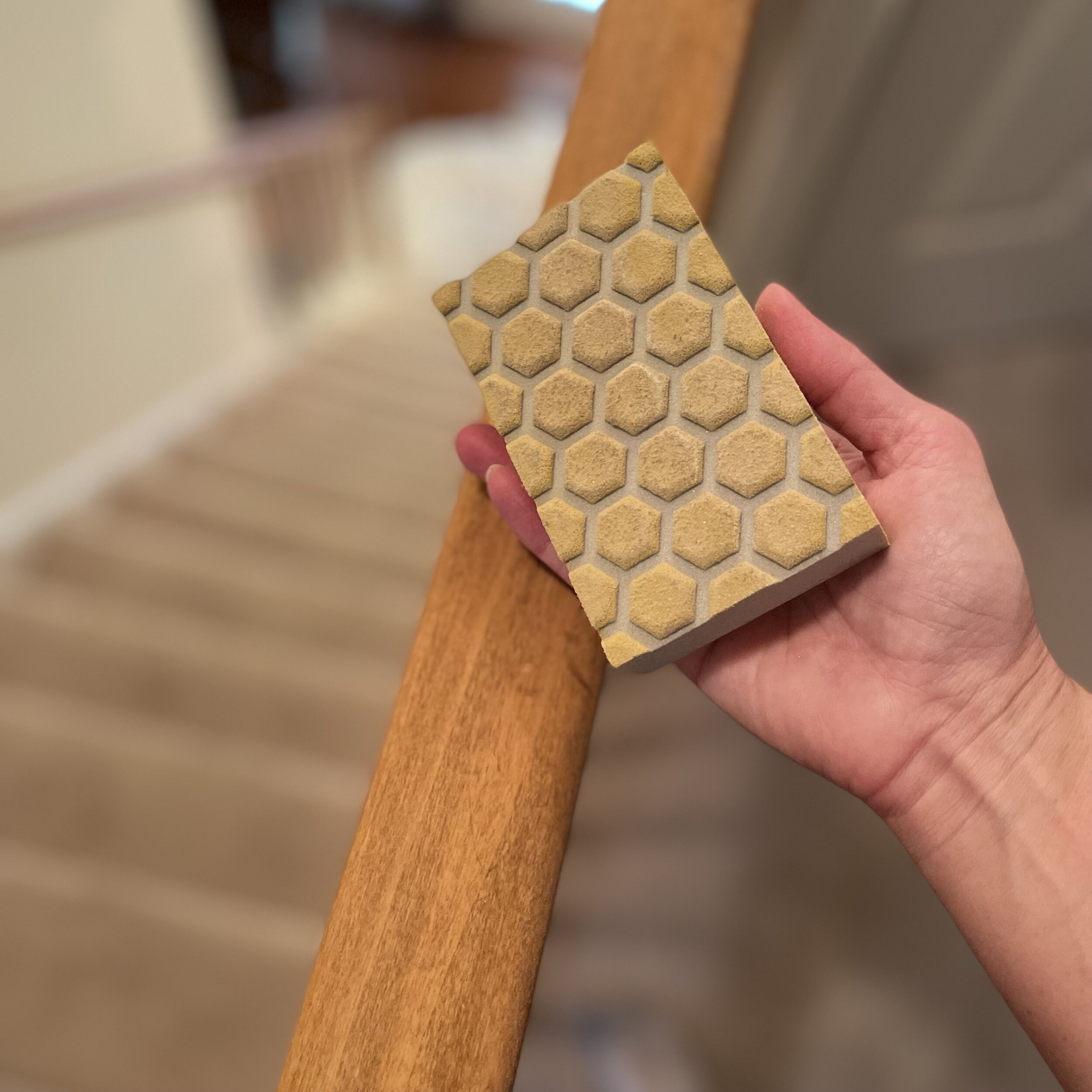How to Transform Your Oak Staircase
This project has been a long-time coming for my husband and I. The staircase was the last place in our home that still revealed the 90’s oak wood and was very out of place with the décor and other finishing’s. It was in dire need of an update. As always, life is busy and it’s been close to five years since we first mentioned painting them. Well, I guess I got a spark of confidence, a burst of energy and motivation to surprise my husband for his birthday. Yes, I alone decided to tackle the staircase painting! 💪💪💪 Was I crazy? Was it too much of a project to handle? “How bad could it be?” I thought to myself. So one day when the kids were away and my husband was on a long day of work, I decided to take a trip to the home improvement store and dive right in. Note: I was kidding myself that I could finish this project in one day and surprise my husband. This project took a little over two days to do the right way, so allow yourself some time.
Keep reading to find out how to transform your stairs and bring them out of the 90’s for good. If I can do it, you can too!😉 Wait! Before we get started, I want to thank my dad for equipping me with the skills, knowledge and confidence to tackle a home improvement project like this….THANKS DAD, love you!
Let’s Begin!
Materials needed:
Frog Tape
Drop cloths
Two 120 grit sanding blocks (edge-detailing type)
one 1” and one 2” angled wall and trim paint brushes (high quality)
Tack cloth
Interior paint primer
Interior High Gloss paint
2 paint containers
Note: You can choose water or oil based paint or primer, but I chose to use water-based primer because it cleans up easily with water, dries quickly, and does not have a strong smell.
(but if you’re a risk taker and strong smells don’t bother you, by all means….have at it! …but with all the surrounding carpet, this girl wasn’t going to chance it😉)
